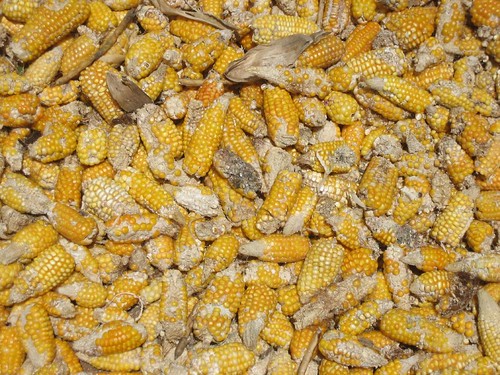 |
| Indigenous Corn: Guatemala 2006. R. Merchan |
However, there are two underlying factors that help us explain the higher demand for food commodities: a) societies are getting richer -and likely to consume more protein-based diets which demand more grains for fed- and b) grains and other commodities are being transformed into fuels, decreasing the amount of food available in the world market.
So what to do as the number of hungry people continues to grow to more than a billion? Essentially there are two ways of addressing the issue and both boiled down to increasing the availability of grains, cereals, and roots. The first one is by intensifying the use of land already in agriculture. This means means incorporating irrigation, fertilizers, hybrid and GMOs seeds, mechanization, and other modern practices that essentially result in increased yields.
The second way to tackle the increasing price of foods is to extend the area of agricultural land. A recent World Bank publication concluded that there are close to half a million hectares of land suitable for agricultural expansion all over the world. Most of these lands, about 200,000 ha, are located in Sub-Saharan Africa where large swaps of depleted lands have been abandoned, but could easily be brought back to production with the right mixture of fertilizer use and irrigation. Another area to take into account in its potential for agricultural increase is the Matto Grosso in Brazil. Although these soils are poor and mainly use for cattle, they have tremendous potential for large soy-bean crops. Environmentally, however, this could threaten the amazon by pushing further into the forest clearings for cattle.
The road, however, to increasing agricultural productivity is filled with blocks. In a recent article, NY Times, commentator Ninia V. Fedoroff, a professor of biology at Pennsylvania State University, argues that the Obama administration and the EPA's 'regulatory burden [is] slowing down the development of genetically modified crops.'
Another interesting point made recently by at The Guardian in light of the G20 meeting in Montpellier, France, on agricultural research and development is the lack of consensus among donor countries regarding the best way to increase agricultural production:
With an alphabet soup of organisations involved in agricultural research at national and international level, developing a coherent approach, setting out priorities and fulfilling objectives is problematic.Regardless of which strategy is followed, it's clear that both donor and host countries must truly commit to devoting the needed funds to the agriculture sector. Yet, given that the commitments made at L'Aquila by the G20 continue to be largely unfulfilled, the prospects of food prices coming down due to increase in food availability are very dim.
